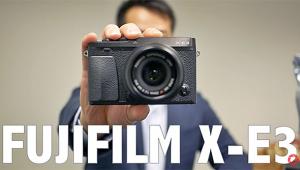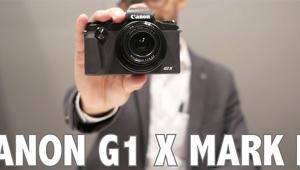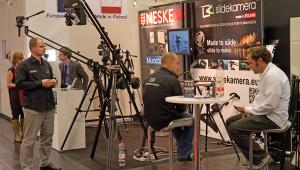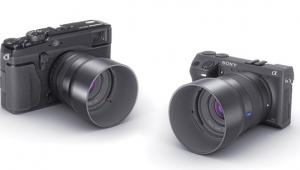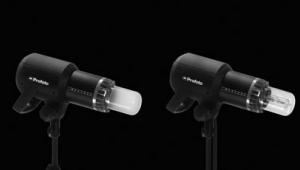Special Report: photokina
New Lenses For 35mm And Digital SLR Cameras Page 3
Tokina (www.thkphoto.com)
has also entered the ring with a digital-only contender, the first in their
new DX series. According to a company rep, the new AF 12-24mm f/4 AT-X PRO DX
(18.6-37mm equivalent) zoom was "designed to ensure that light strikes
the CCD or CMOS sensor at as close to a 90Þ angle as possible, even out
toward the edges and steps have been taken to control internal flare caused
by silicon sensors." This one features a constant f/4 maximum aperture
so it's slightly large/heavy (77mm filter size; 20 oz). It features an
advanced optical design utilizing two all-new aspherical elements, two high
refraction/ low dispersion elements, and one special FK03 glass element. (List
price, $899.)
Canon (www.usa.canon.com)
continues to expand its EF-S series lenses now that they're compatible
with two cameras: EOS Digital Rebel and the new EOS 20D. Most future consumer-grade
Canon digital SLRs should also accept the smaller EF-S lenses. The new 17-85mm
f/4-5.6 IS USM zoom (27-136mm equivalent) is particularly interesting since
it features two "firsts": it's the shortest zoom to incorporates
an optical Image Stabilizer for sharper photos in handheld shooting and the
first Canon zoom to include a glass-molded aspherical lens element for high
image quality. Photographers who want an ultra-wide zoom will prefer the shortest
EF-S lens, the new 10-22mm f/3.5-4.5 USM model (16-35mm equivalent); this boasts
one Super-UD plus three aspherical elements. (Street price, $599 and$799, respectively.)
Pick Of The Show
Lenses with built-in Image Stabilizer are available from several manufacturers,
but Konica Minolta is the only company to date to offer an SLR camera with a
built-in camera shake compensating system. Available only in the Maxxum 7D,
the CCD-shift Anti-Shake system is a brilliant concept, because the mechanism
works with virtually any Maxxum AF lens (except the 6mm Fisheye and Macro Zoom
3x-1x). That precludes the need to buy special lenses with built-in Image Stabilizer
mechanisms.
The Maxxum 7D employs the CCD-shift technology previously available in some
DiMAGE-series cameras with built-in lenses. This system instantly shifts the
CCD to compensate for vertical or horizontal camera shake, allowing us to shoot
at shutter speeds up to three times slower, when compared to conventional camera
equipment. Useful especially in low light, Anti-Shake allows for using lower
ISO settings for clean images without the image-degrading noise that creeps
in at high ISO sensitivity.
As expected, this is also a highly versatile 6-megapixel camera that's
loaded with automatic, semiautomatic, and manual options for simplicity and
full creative control. It's also quite fast, thanks to a high-capacity
buffer memory and new CxProcess III image processor that allows for shooting
long sequences of JPEG, raw, or raw+JPEG images at 3 fps. The rugged body (with
magnesium-alloy parts) resembles the conventional Maxxum 7 and features many
similar dial and lever controls that facilitate the switch to digital photography.
Naturally, the new camera also sports various additional controls and an oversized
2.5'' LCD monitor. All in all, this Konica Minolta digital SLR camera
is highly competitive with many models of other brands and it deserves to become
a best seller, especially among photographers who own Maxxum lenses.
- Log in or register to post comments
